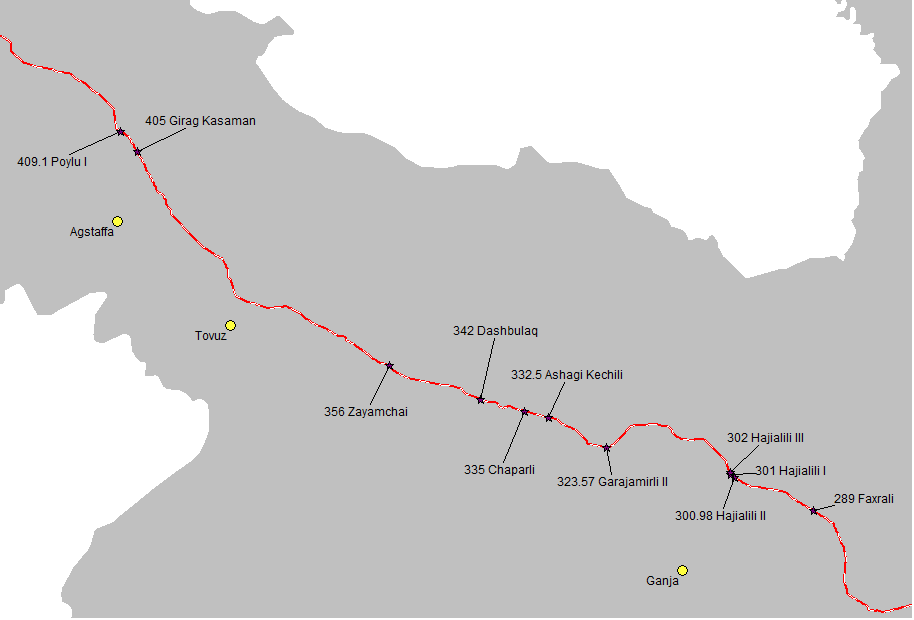Studies of the archaeology of this period have been dominated by the presence of urban and religious centres. Both of these were guided by historical studies which are outside the scope of this work. The two main visible influences in the record are the towns of Ganja and Shamkir. Both had stone defences that enclosed large areas and presumably had a developed hinterland of smaller scale settlements, which the BTC project excavations have started to reveal.
The range of settlements excavated, covered the start of the Muslim period and on to the seventeenth century AD. The majority covered a period of use of 200-300 years before being abandoned. In some cases, it is possible to identify the sequence of movement of the settlement focus over time. These sites represent one of the first occasions when evidence frequently seen in the plough soil, was confirmed by excavation for a type of site that would not normally receive intense archaeological attention.
Fakhrali | Hajialili II | Hajialili I | Hajialili III | Seyidlar | Garajamirli II | Dashbulag | Girag Kasaman | Poylu II | Poylu I
The objective of traditional Muslim belief is to bury the body and leave no trace above ground after a period of time. In certain areas graves were marked by headstones or monuments and possibly enclosed by a fence. These appear to be later characteristics, although there are medieval examples of such items. In terms of pipeline routing, it was easy to identify marked sites and avoid them, but less so with unmarked sites. It is thus surprising that more unmarked sites were not discovered in the course of construction.

The comments facility has now been turned off.
© Internet Archaeology/Author(s)
University of York legal statements | Terms and Conditions
| File last updated: Fri Jun 17 2011